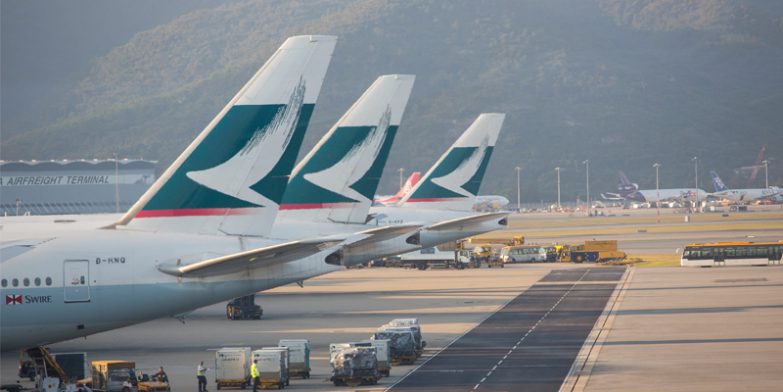
Airfreight pricing out of China has climbed steeply in recent weeks as a perfect storm of seasonal demand, severe weather and rail disruption has tightened available capacity.
Rates on key routes into Europe are currently elevated by around 30–50%, with shippers facing higher costs and limited space as Golden Week factory closures coincide with disrupted transport networks.
Rates traditionally rise ahead of China’s Golden Week, but this year’s increases have been amplified by the impact of Super Typhoon Ragasa, which cancelled hundreds of flights.
The resulting fall in global freighter capacity was felt across major lanes, with an 8% drop overall and sharper reductions on services to the Middle East and Europe.
At the same time, rail connections between China and Europe were interrupted by border closures, pushing additional volumes into the airfreight market. With these pressures occurring simultaneously, carriers pushed rates higher to balance demand.
Market outlook and peak season drivers
The question now is how long these levels will hold. Analysts expect only a short-lived peak, with muted rate increases beyond mid-October, when seasonal eCommerce flows, new technology product launches and festive demand will add to volumes through November and early December.
Despite weaker demand following recent tariff changes, eCommerce growth continues to absorb significant belly-hold and freighter capacity, especially on China–Europe routes.
Cross-border online retail has also reshaped traffic flows, with European hubs such as Belgium and Hungary attracting more direct volumes. This has coincided with softer growth at traditional Western European gateways.
Trade flows and structural changes
Overall EU air trade has grown around 6% this year, with particularly strong gains of 9% on Americas routes and 12% on Middle East/South Asia corridors. China’s exports to Europe by air are up 9%, outpacing other Asian origins, which have shown weaker performance. Much of this traffic is eCommerce-led and bypasses traditional consolidator channels, reshaping regional entry points.
While carriers manage these fluctuations, additional freighter capacity continues to enter the market. New aircraft deliveries are gradually expanding lift, though technical issues and repositioning mean capacity remains unevenly distributed. Market participants note that while short-term congestion may ease, demand events and unexpected disruptions can quickly tighten supply again.
Stay ahead of volatility in global airfreight. Global Forwarding provides tailored solutions to manage costs, secure capacity, and keep your supply chain moving. EMAIL our VP, Adam Davies to learn more.





